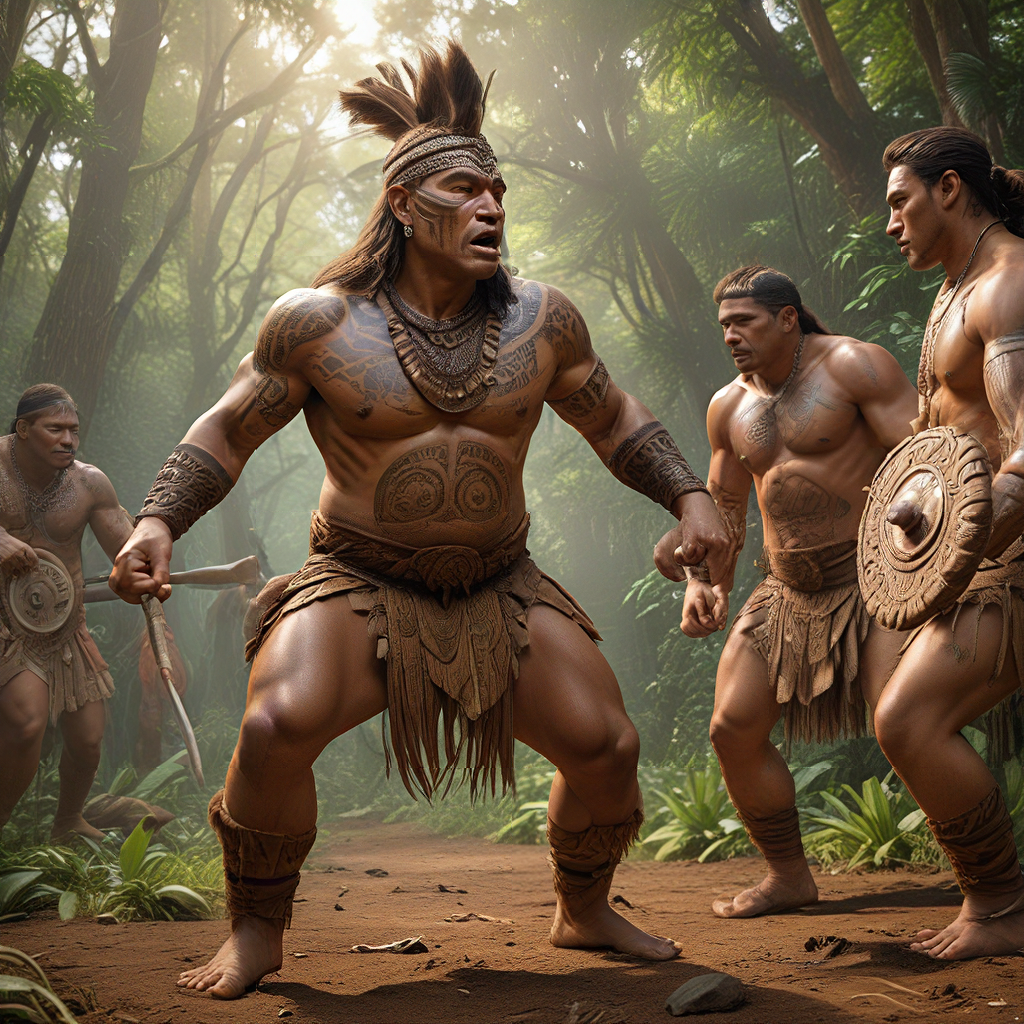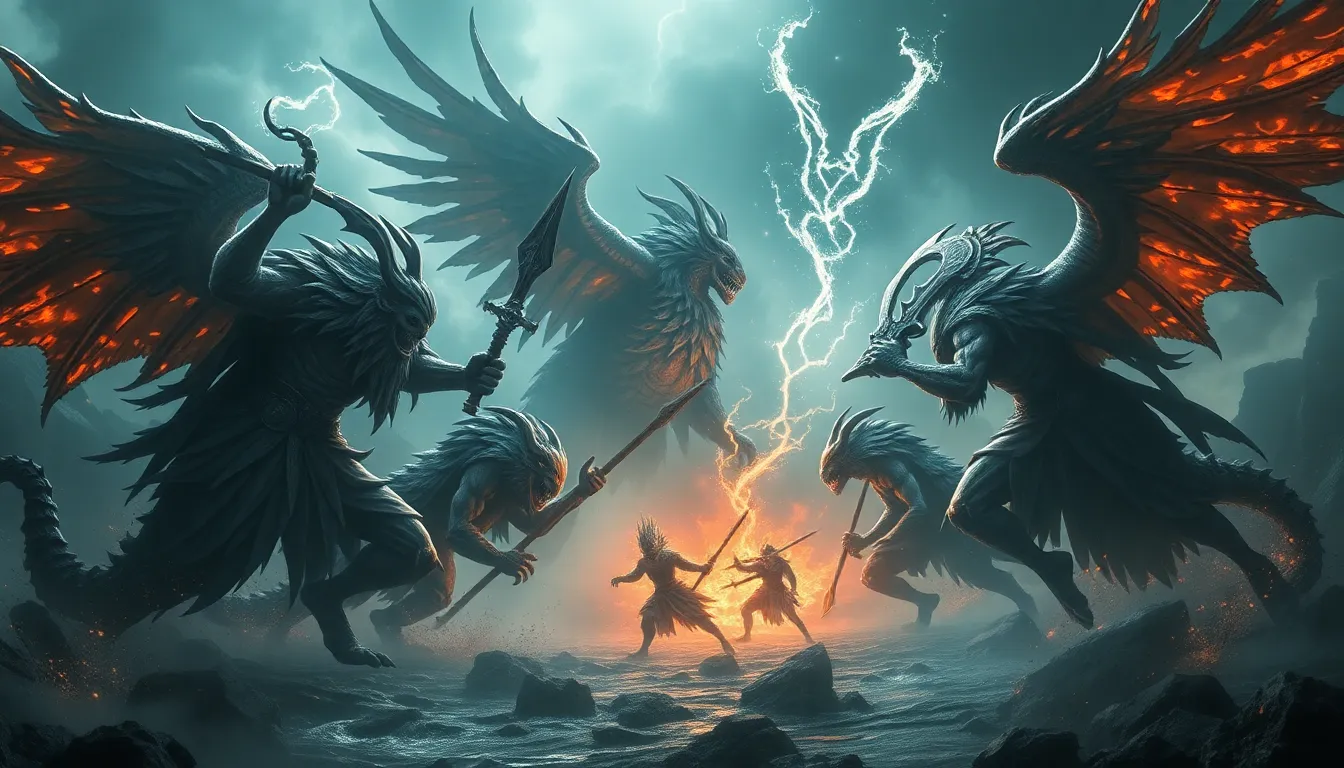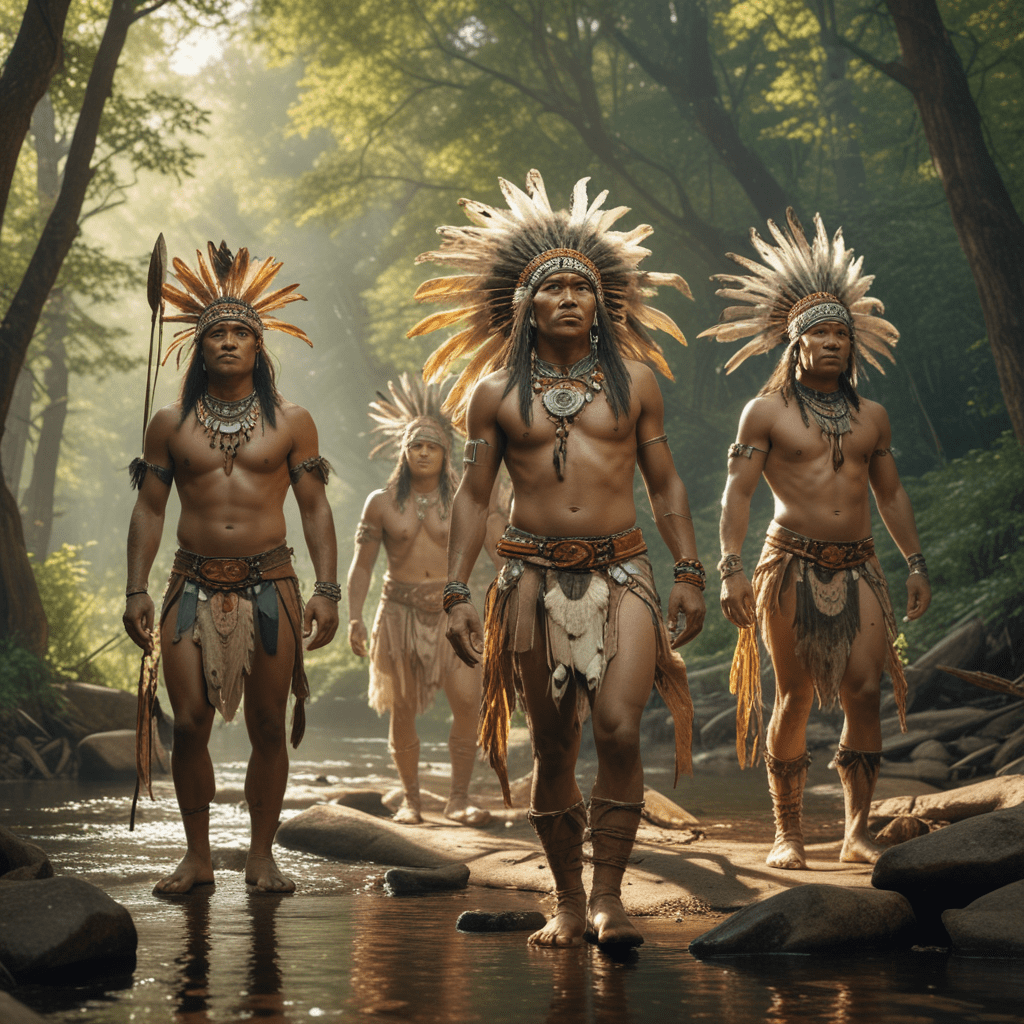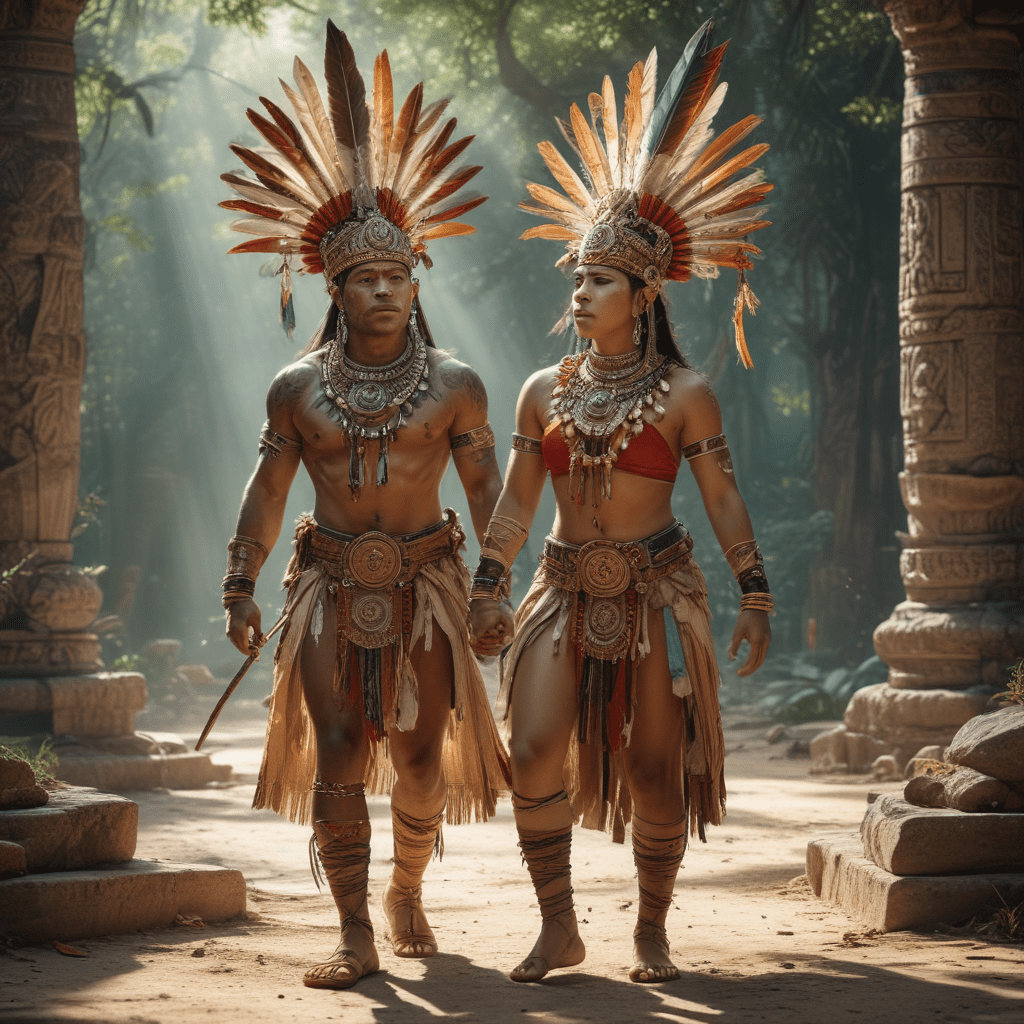Māori Mythology’s Stories of Conflict and Resolution
Delving into the intricate tapestry of Māori mythology unveils a rich world of conflict and resolution, a testament to the enduring power of storytelling in Māori culture. These tales, passed down through generations, offer profound insights into the values, beliefs, and social structures of the Māori people. Through the captivating narratives of gods, demi-gods, and ancestral heroes, Māori mythology explores themes of creation, lineage, and the eternal struggle between order and chaos.
The Importance of Storytelling in Māori Culture
Storytelling is deeply ingrained in Māori culture, serving as a vital instrument for transmitting knowledge, fostering community, and preserving collective memory. Māori legends and myths, known as kōrero tuku iho, are more than mere entertainment; they are living repositories of history, wisdom, and spiritual guidance. These tales offer a framework for understanding the world, defining societal norms, and navigating the complexities of human existence. By embodying the essence of Māori values, these narratives guide individuals, families, and entire communities towards a path of harmony, balance, and interconnectedness.
The Role of Gods and Supernatural Beings
The realm of Māori mythology is populated by a vibrant cast of gods, goddesses, and supernatural beings who shape the destiny of humanity and the natural world. Each deity embodies specific aspects of nature, human nature, or the forces that govern the universe. These characters are not merely passive observers but active participants in the unfolding drama of creation, conflict, and resolution. Their actions, motivations, and relationships provide valuable lessons and moral guidance for those who listen to their stories. The interplay between these divine figures, their conflicts, and their eventual resolutions offer profound insights into the interconnectedness of all things and the importance of balance and harmony in the universe.
A Realm of Conflict: The Creation Myth
The Māori creation myth, Te Kore, Te Po, and Te Ao, tells the story of the emergence of the world from primordial darkness. This epic narrative depicts a tumultuous struggle between the forces of chaos and order, symbolized by the gods Rangi, the sky father, and Papa, the earth mother. Their intertwined bodies, representing the primordial state of the universe, were locked in an embrace, preventing the birth of life. The conflict arose from their children, the gods of the natural world, who craved light and space to flourish. In a dramatic act of rebellion, Tāne, the god of forests, pushed his parents apart, separating the sky and the earth, thus creating the world as we know it. This creation myth highlights the inherent tension between order and chaos, the need for growth and change that inevitably leads to conflict, and the eventual resolution that emerges through sacrifice and transformation.
The Power of Whakapapa: Family Trees as Guides to Morality
Whakapapa, the Māori concept of genealogy, is central to the understanding of Māori mythology. These family trees are not merely records of ancestry; they are living narratives that connect individuals to the past, present, and future. Every Māori person possesses a whakapapa, which serves as a guide to their identity, responsibilities, and place within the community. These intricate genealogies also reveal the origins of the natural world, gods, and even everyday objects. Through whakapapa, Māori people trace their lineage to the gods, highlighting the interconnectedness of humans and the divine. Whakapapa also emphasizes the importance of respect for ancestors and the consequences of actions, as these actions impact both the present and the future generations.
Tāne’s Journey of Conflict and Resolution: From Disobedience to Reconciliation
One of the most compelling stories in Māori mythology is the tale of Tāne, the god of forests. Tāne, the son of Rangi and Papa, represents the vital force of life and growth. His journey is a powerful illustration of the consequences of disobedience, the importance of reconciliation, and the cyclical nature of life and death.
Tāne, passionate about his role as creator and protector of the forests, yearned for the light and space to nurture his trees. He led the rebellion against his parents, separating the sky and the earth to create the world as we know it. However, Tāne's actions also led to consequences. The separation of Rangi and Papa, a tragic event for the gods, created a chasm between the sky and the earth, and with this separation came the introduction of death into the world.
Despite the pain of his actions, Tāne's journey of conflict and resolution eventually leads to a reconciliation with his parents. He recognizes the importance of the cycle of life and death, understanding that death is a necessary part of renewal. He learns to balance his desires for growth and progress with respect for the delicate balance of the natural world.
Tāne's story teaches us about the importance of responsibility and respect for the natural order. It also illustrates the transformative power of remorse and the possibility of finding forgiveness even after causing pain. His journey highlights the importance of balancing our individual needs with the needs of the collective, ultimately finding harmony in the interplay of conflict and resolution.
The Trials of Maui: Overcoming Adversity and Achieving Greatness
Maui, a legendary demi-god known for his cunning and resourcefulness, is a central figure in Māori mythology. His adventures are filled with both conflict and resolution, illustrating the importance of perseverance, ingenuity, and the power of human will. Maui's exploits are not only entertaining but also offer invaluable lessons about life, death, and the resilience of the human spirit.
Maui's most famous feat is his attempt to capture the sun, which he believed was moving too quickly across the sky. Recognizing that the sun's rapid journey prevented the crops from ripening properly, Maui devised a plan to slow it down. He used a skillfully woven fishhook, representing his intelligence and resourcefulness, and lassoed the sun, bringing it to a standstill. This act of defiance against the natural order ultimately led to a compromise – the sun agreed to slow its journey across the sky, thus granting humans more time to cultivate their crops.
Maui's other adventures, such as his fishing up of the North Island of New Zealand and his quest for immortality, also demonstrate his ability to overcome adversity. However, his actions often came with consequences, reminding us that even the most valiant efforts can have unintended side effects.
Despite his failures, Maui's tenacity and his unwavering belief in himself make him a symbol of human potential. He teaches us that even in the face of seemingly insurmountable challenges, ingenuity and courage can pave the way for progress and innovation. His stories offer a message of hope and perseverance, encouraging us to face our fears and strive for something greater.
The Battle of the Gods: The Interplay of Violence and Reconciliation
The realm of Māori mythology, like many other mythologies, is not devoid of conflict and violence. The "Battle of the Gods" is a prime example of this. This epic conflict, waged between the gods of the sky and the gods of the earth, signifies a clash between different worldviews and aspirations.
The battle, a story of intense struggles and heroic deeds, represents the tension between the forces of nature and the human desire for progress. It highlights the inherent challenges in achieving balance and harmony within the universe. This conflict, while rooted in violence, eventually leads to a resolution through negotiation and compromise.
The "Battle of the Gods" serves as a cautionary tale, emphasizing the destructive nature of unchecked ambition and the need for diplomacy and understanding in resolving conflicts. It also underscores the importance of acknowledging the interconnectedness of all things, acknowledging that the actions of one entity can have profound consequences for others.
This story, while depicting violence and warfare, also offers hope. It emphasizes the importance of finding common ground and resolving conflict through dialogue and compromise. It highlights the enduring power of peace and reconciliation in bringing harmony to a world that is often characterized by conflict.
The Role of Magic and Supernatural Powers
Magic and supernatural powers play a significant role in Māori mythology, adding depth and intrigue to the narratives. These abilities, often a gift from the gods or inherited through lineage, are not merely tools for dramatic effect; they are representations of the power of the natural world and the interconnectedness between humans and the divine.
Māori mythology is filled with stories of powerful gods and demi-gods who wield magic, such as Tāne's ability to manipulate nature and Maui's mastery of the elements. These abilities are not merely fantastical embellishments; they serve as powerful metaphors for the forces that shape the world, both physical and spiritual.
Magic in Māori mythology is not always used for self-serving purposes. It can be a force for good, used to protect, heal, and restore balance. For example, the goddess Hine-nui-te-pō, the goddess of death, is also associated with healing and the renewal of life. Her powers illustrate the duality of existence, the interconnectedness of life and death, and the inherent power of the natural world.
Magic in Māori mythology serves as a reminder that there are forces beyond our immediate understanding that shape our world and our lives. It encourages respect for the unseen, the unknown, and the power of the universe. It also encourages us to recognize the potential for healing and transformation that lies within ourselves and the world around us.
Lessons in Harmony: Resolving Conflict through Compromise and Forgiveness
The stories of Māori mythology, filled with conflict and resolution, offer valuable lessons for navigating the complexities of human relationships and the challenges of forging a peaceful society. They highlight the importance of understanding, empathy, and forgiveness in resolving disputes.
These stories emphasize that conflict is an inevitable part of life. However, it does not have to lead to destruction. Through compromise, understanding, and a willingness to forgive, communities can overcome differences and build a harmonious future.
The stories of Maui's reconciliation with the sun, Tāne's journey towards forgiveness, and the eventual resolution of the “Battle of the Gods" illustrate the transformative power of forgiveness and the importance of finding common ground. These stories remind us that even in the face of adversity, there is always the possibility of finding peace, harmony, and understanding.
The lessons of Māori mythology offer a timeless message of balance and harmony. They encourage us to strive for understanding, to acknowledge the interconnectedness of all things, and to embrace the transformative power of forgiveness. These principles are essential for building a world where conflict can be resolved peacefully and where communities can thrive.
FAQ
What are the main themes explored in Māori mythology?
Māori mythology explores themes of creation, lineage, the struggle between order and chaos, the importance of balance and harmony, the consequences of actions, and the transformative power of forgiveness.
What is the significance of whakapapa in Māori mythology?
Whakapapa, the concept of genealogy, is central to Māori mythology. It connects individuals to the past, present, and future and serves as a guide to identity, responsibilities, and place within the community.
How does magic play a role in Māori mythology?
Magic in Māori mythology represents the power of the natural world and the interconnectedness between humans and the divine. It can be used as a force for good, to protect, heal, and restore balance.
What are some important lessons that can be learned from Māori mythology?
Māori mythology teaches us about the importance of respect for the natural world, the consequences of disobedience, the power of perseverance, the need for compromise and forgiveness, and the enduring strength of the human spirit.



